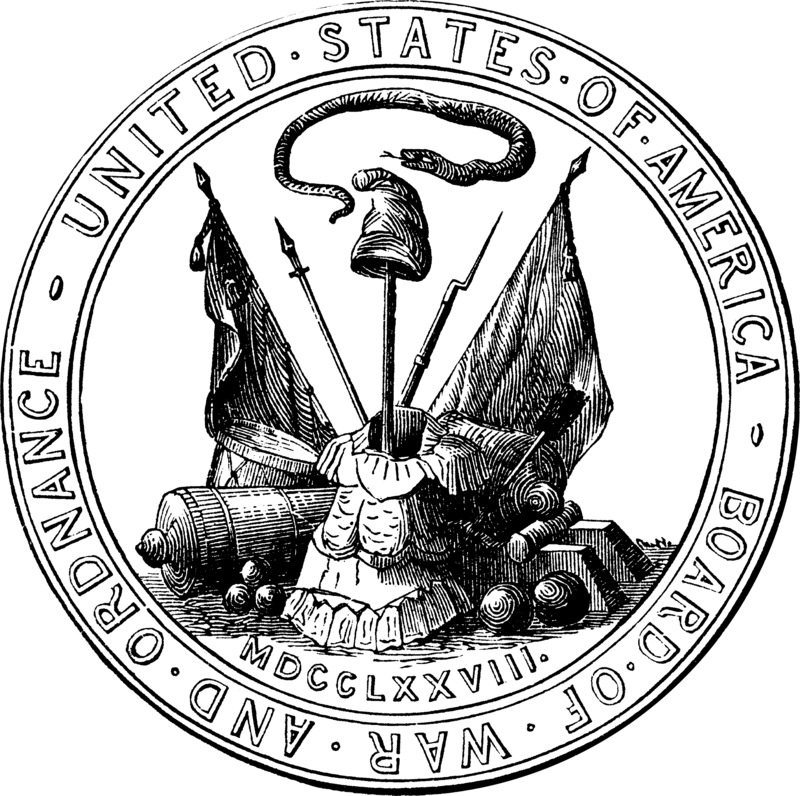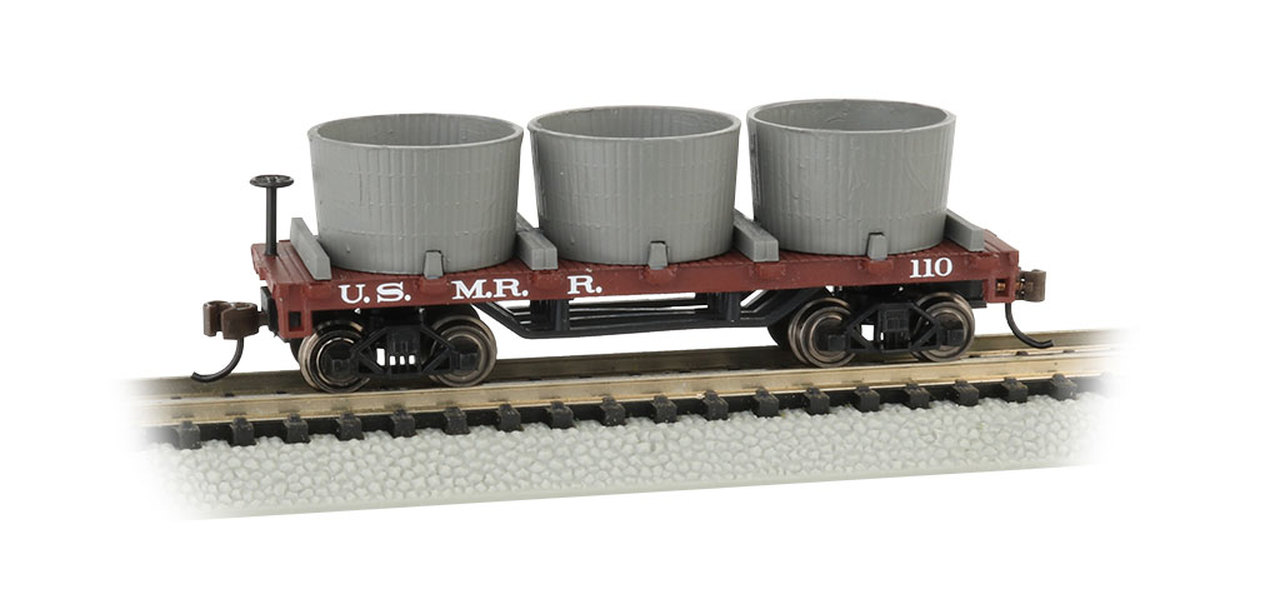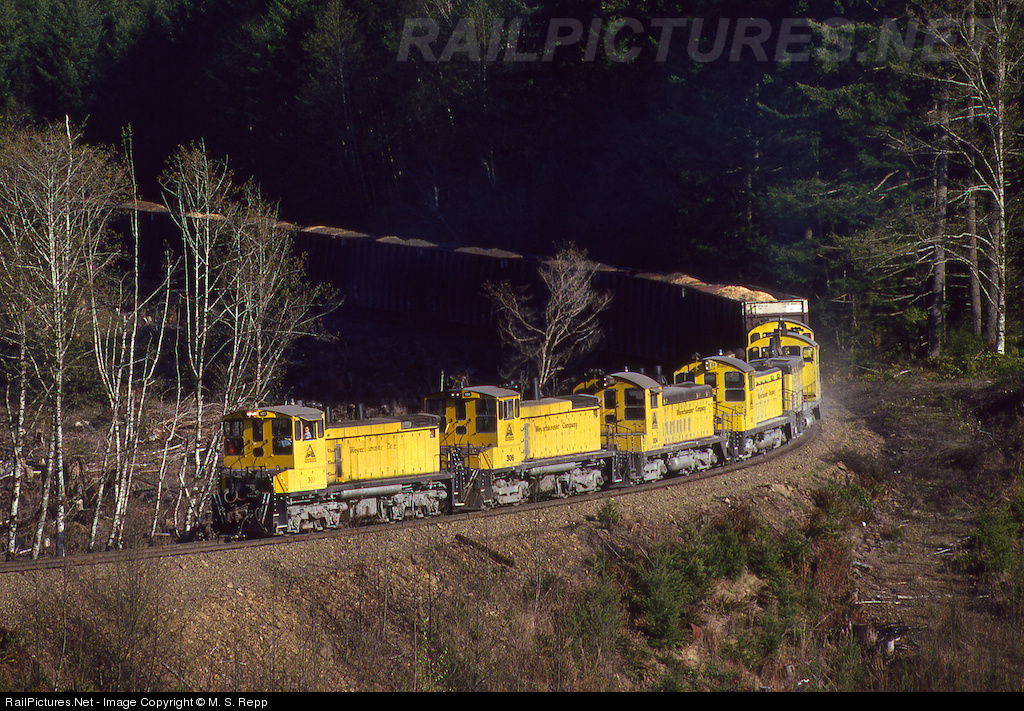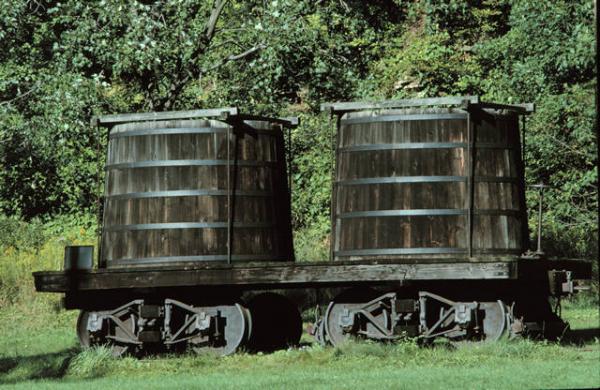Specific Item Information: From Bachmann's Old Timers line.
Prototype History: The earliest version of tank cars, or the "oil car" as it was known then, began to appear in the early 1860s during the Civil War. Essentially, a standard flatcar was employed with two or three vertical vats placed on top. Unfortunately, the design had several flaws; the most obvious was that it could not hold much product due to height and width issues. Additionally, leaking was again an issue. By the late 1860s, following the war, the first true tank cars began to take shape. In this particular case the early vertical vat-on-flat-car design was changed to a horizontal iron tank, which was then mounted to a traditional flat car. The design was roughly similar to what is now commonly in service today, featuring a top dome (with safety valve) to load the product as well as a discharge valve at the bottom. It allowed for much more product to be shipped via one car and quickly found widespread use.
Road Name History:  The U.S. Military Railroad (USMRR) was established by the United States War Department as a separate agency to operate any rail lines seized by the government during the American Civil War. The United States Congress authorized President Abraham Lincoln to seize control of the railroads and telegraph for military use in January 1862. In practice, however, the USMRR restricted its authority to Southern rail lines captured in the course of the war. As a separate organization for rail transportation the USMRR is one of the predecessors of the modern United States Army Transportation Corps.
The U.S. Military Railroad (USMRR) was established by the United States War Department as a separate agency to operate any rail lines seized by the government during the American Civil War. The United States Congress authorized President Abraham Lincoln to seize control of the railroads and telegraph for military use in January 1862. In practice, however, the USMRR restricted its authority to Southern rail lines captured in the course of the war. As a separate organization for rail transportation the USMRR is one of the predecessors of the modern United States Army Transportation Corps.
The American Civil War was the first war where railroads were a significant factor in moving troops and supplying forces in the field. The United States Military Railroad organization was established to coordinate this new capability for the Union Army. The USMRR organization benefited from the appointment of experienced railroad men from the private sector. Thomas A. Scott, vice-president of the Pennsylvania Railroad (PRR), served as an Assistant Secretary of War during the period 1861 - 1862. In January 1862 Scott prepared a report on military transportation that anticipated the creation of the USMRR. Daniel C. McCallum, former general superintendent of the New York and Erie Railroad, was appointed as Military Director and Superintendent of U.S. Railroads. Herman Haupt, former chief engineer of the PRR, was appointed as Chief of Construction and Transportation in the Virginia theater. The departments in the USMRR tended to operate autonomously, although micromanagement from the Secretary of War and overlapping authority between departments did affect their operations. Over time the USMRR would buy, build or capture 419 locomotives and 6,330 cars beyond the rolling stock that was requisitioned from the various Northern railroads. When Col. McCallum was first appointed the USMRR system consisted only of 7 miles of the Washington and Alexandria Railroad; however, by war?s end the USMRR exercised control over a network of more than 2,000 miles of military railroads and captured Southern rail lines.

The American Civil War was the first war where railroads were a significant factor in moving troops and supplying forces in the field. The United States Military Railroad organization was established to coordinate this new capability for the Union Army. The USMRR organization benefited from the appointment of experienced railroad men from the private sector. Thomas A. Scott, vice-president of the Pennsylvania Railroad (PRR), served as an Assistant Secretary of War during the period 1861 - 1862. In January 1862 Scott prepared a report on military transportation that anticipated the creation of the USMRR. Daniel C. McCallum, former general superintendent of the New York and Erie Railroad, was appointed as Military Director and Superintendent of U.S. Railroads. Herman Haupt, former chief engineer of the PRR, was appointed as Chief of Construction and Transportation in the Virginia theater. The departments in the USMRR tended to operate autonomously, although micromanagement from the Secretary of War and overlapping authority between departments did affect their operations. Over time the USMRR would buy, build or capture 419 locomotives and 6,330 cars beyond the rolling stock that was requisitioned from the various Northern railroads. When Col. McCallum was first appointed the USMRR system consisted only of 7 miles of the Washington and Alexandria Railroad; however, by war?s end the USMRR exercised control over a network of more than 2,000 miles of military railroads and captured Southern rail lines.
Brand/Importer Information: Bachmann Industries (Bachmann Brothers, Inc.) is a Bermuda registered Chinese owned company, globally headquartered in Hong Kong; specializing in model railroading.
Founded in Philadelphia, Pennsylvania, the home of its North American headquarters, Bachmann is today part of the Kader group, who model products are made at a Chinese Government joint-venture plant in Dongguan, China. Bachmann's brand is the largest seller, in terms of volume, of model trains in the world. Bachmann primarily specializes in entry level train sets, and premium offerings in many scales. The Spectrum line is the high quality, model railroad product line, offered in N, HO, Large Scale, On30, and Williams O gauge all aimed for the hobbyist market. Bachmann is the producer of the famous railroad village product line known as "Plasticville." The turnover for Bachmann model trains for the year ended 31 December 2006 was approximately $46.87 million, a slight increase of 3.36% as compared to 2005.
Founded in Philadelphia, Pennsylvania, the home of its North American headquarters, Bachmann is today part of the Kader group, who model products are made at a Chinese Government joint-venture plant in Dongguan, China. Bachmann's brand is the largest seller, in terms of volume, of model trains in the world. Bachmann primarily specializes in entry level train sets, and premium offerings in many scales. The Spectrum line is the high quality, model railroad product line, offered in N, HO, Large Scale, On30, and Williams O gauge all aimed for the hobbyist market. Bachmann is the producer of the famous railroad village product line known as "Plasticville." The turnover for Bachmann model trains for the year ended 31 December 2006 was approximately $46.87 million, a slight increase of 3.36% as compared to 2005.
Item created by: Jenna on 2019-04-09 17:53:46
If you see errors or missing data in this entry, please feel free to log in and edit it. Anyone with a Gmail account can log in instantly.
If you see errors or missing data in this entry, please feel free to log in and edit it. Anyone with a Gmail account can log in instantly.










